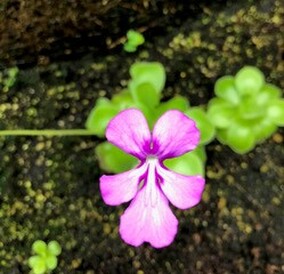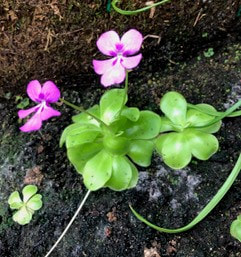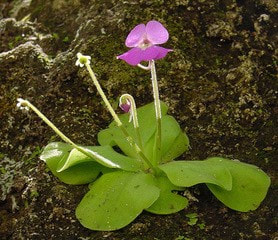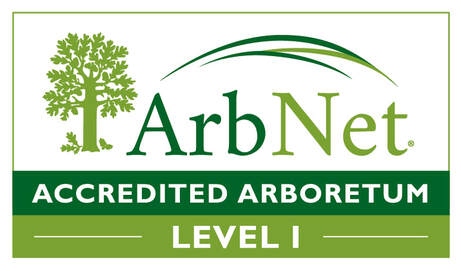Butterwort (pinguicula)
Connecticut’s Beardsley Zoo is home to many animals but we are also very involved in cultivating plants from our animals’ wild habitat. You can see some of these plants with the animals in their habitats or you can see them in our Victorian Greenhouse. Many of the plants are endangered just like many of the animals.
|
Description: The Butterwort plant is a small herbaceous plant has produces rosettes of flat leaves with upturned margins. The leaves are soft greenish-yellow colors that also have a slightly greasy or buttery feel. The Latin name actually means “little greasy one”. Some gardeners actually use butterwort as natural pest control.
The leaf surface is covered in minute, sticky hairs that produce a resin to catch small prey like gnats, fruit flies and springtails. The struggling of the prey causes sessile glands to secrete a liquid of enzymes and acids that rapidly overcome and dissolve the prey. The butterwort absorbs the mineral-rich soup. The Butterwort blooms in spring with yellow, pink, purple or white flowers. The flower appears atop a tall spindly stalk well away from the body of the plant. The name Butterwort includes an entire genus of remarkable plants. Over 80 species fit within the genus so the size can vary from 2 to 12 inches in diameter. Butterworts from cold winter climates hibernate as small buds. Species from Mexico turn into non-carnivorous succulent plants during the subtropical winter dry season. Range: Butterworts can be found in the northern hemisphere from Siberia to North America and as far south as Central and South America. Mexico is home to the widest variety. Habitat: Habitats for the differing versions of the Butterwort quite naturally vary in some ways. But, the greatest percentages of them most commonly grow in regions consisting of nutrient-poor, high alkaline soils. Life: This plant is hummingbird-pollinated. Life Span: Varies greatly based on genus and habitat. Status: Varies greatly based on genus and habitat. |









